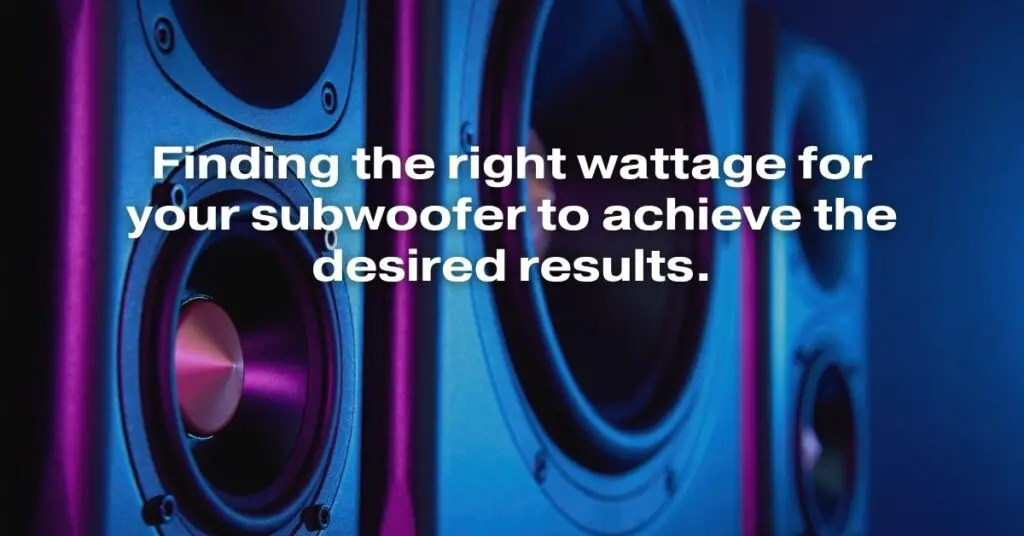Subwoofers are an essential component of any home theater or music system, adding depth and impact to the audio experience. However, choosing the right subwoofer wattage can be a daunting task, as it involves understanding the relationship between power, room size, and listening preferences. This comprehensive guide will delve into the intricacies of subwoofer wattage and provide you with the knowledge to make an informed decision when selecting the perfect subwoofer for your setup.
Understanding Subwoofer Wattage
Subwoofer wattage, measured in watts (W), represents the amount of power a subwoofer can handle. A higher wattage indicates a more powerful subwoofer capable of producing louder and deeper bass. However, it’s crucial to understand that wattage alone does not determine the quality of bass reproduction. Other factors, such as driver size, enclosure design, and room acoustics, also play a significant role.
Considering Room Size
The size of your listening space is a critical factor in determining the appropriate subwoofer wattage. A small room may not require a high-wattage subwoofer, as excessive power could lead to overpowering bass and distortion. Conversely, a large room may demand a more powerful subwoofer to adequately fill the space with deep, impactful bass.
Listening Preferences and Music Genres
Your personal listening preferences and the genres of music you enjoy also influence subwoofer wattage selection. If you prefer subtle bass that complements the overall sound, a lower-wattage subwoofer may suffice. However, if you crave thunderous bass that shakes the room, a higher-wattage subwoofer is necessary. For genres like hip-hop, electronic music, and action movies, a powerful subwoofer is essential to deliver the full impact of the low-frequency effects.
Matching Subwoofer Wattage to Speakers
Matching the subwoofer’s power to your existing speakers is essential for achieving a balanced and cohesive soundstage. A subwoofer that is significantly more powerful than your speakers could overpower the overall sound, while an underpowered subwoofer may struggle to keep up with the demands of your speakers. Ideally, the subwoofer’s wattage should be within the same range as the combined wattage of your main speakers.
Efficiency and Sensitivity
Subwoofer efficiency and sensitivity are crucial parameters that influence the perceived loudness of a subwoofer. Efficiency refers to how effectively a subwoofer converts electrical energy into acoustic energy. A more efficient subwoofer produces louder bass with less power. Sensitivity, measured in decibels (dB), indicates how loud a subwoofer plays at a given power input. A higher sensitivity rating means the subwoofer produces more sound with less power.
Room Acoustics and Placement
Room acoustics significantly impact the performance of a subwoofer. Hard surfaces like walls, floors, and ceilings can reflect bass frequencies, leading to boomy or uneven bass response. Strategic subwoofer placement can help mitigate these issues. Placing the subwoofer near a corner can enhance bass output, while placing it away from walls can reduce room interactions.
Conclusion
Finding the right subwoofer wattage involves a careful consideration of room size, listening preferences, music genres, speaker compatibility, efficiency, sensitivity, and room acoustics. By understanding these factors, you can make an informed decision and select a subwoofer that delivers the desired bass experience for your unique setup. Remember, the ultimate goal is to achieve a balanced, immersive, and enjoyable audio experience that complements your listening preferences and brings your music and movies to life.


